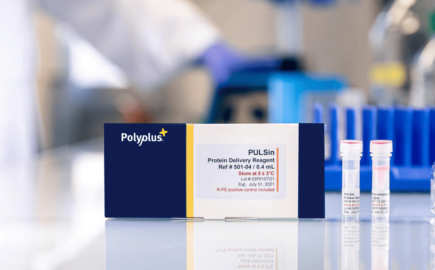The delivery of protein and antibody using PULSin® represents a powerful approach for functional studies in live cells.

The intracellular delivery of proteins to live cells offers a powerful alternative as a scientific research tool where other approaches (DNA transfection, RNAi transfection) have failed. Protein delivery approach allows various experiments in live cells including studies of protein interference with blocking antibodies, live immunolabelling, protein-protein interactions, intracellular protein trafficking, protein phosphorylation states or regulation of transcriptional pathway and therefore artificial control of gene expression levels.
The intracellular delivery of purified proteins, antibodies and peptides to the cytoplasm and to the nucleus is naturally impeded by the cell membrane. In order to allow facilitated non-invasive delivery of such biomolecules, we have developed a potent carrier: PULSin®.
The mechanism of action is the following: the first step of intracellular delivery of biomolecules with PULSin® is the formation of non-covalent complexes between the biomolecules of interest and the delivery reagent. Complexes are subsequently internalized via cationic cell-adhesion receptors present on virtually all cells and are released into the cytoplasm where they disassemble. The native protein can thus diffuse throughout the cytoplasm and reach its target organelle to perform its biological function. The process is gentle to cells and delivers functional proteins. PULSin® delivers proteins to a large variety of live eukaryotic cells, including primary and suspension cells.